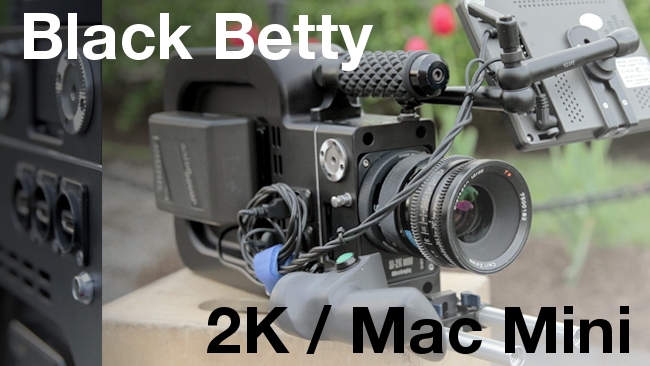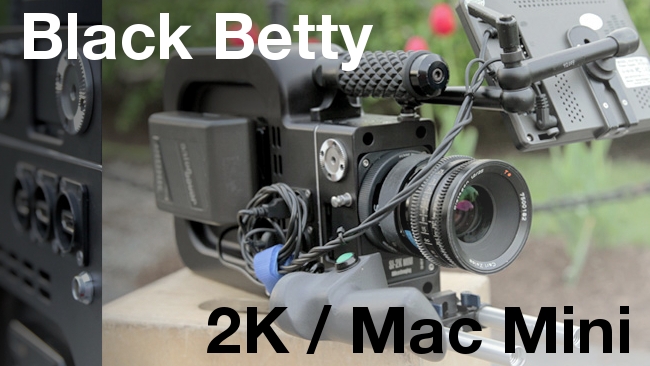
 Black Betty
Black Betty
We are in the midst of a 4K arms race, but upstarts Adam Van Voorhis & Mike Szegedi are rethinking the terms of engagement with a 2K camera that can shoot, edit and post your film, courtesy of its brain: a Mac Mini
4K as a video acquisition standard is experiencing its coming of age, but the most interesting camera appearing on the horizon isn't 4K and may never be available for sale. Adam Van Voorhis, equipment manager at Rule Boston Camera, and Mike Szegedi, Senior Manufacturing Manager at Bluefin Robotics, have spent the last two years designing, building, and testing their finished prototype of the Black Betty - a camera built with off-the-shelf parts that tackles production in a whole new way.
In-camera edit
The sensor in their creation is none other than the SI-2K Mini CMOS from Silicon Imaging, identical to that used on Slumdog Millionaire and 127 Hours. It boasts 2K and 1080P recording up to 30fps and 11 stops of dynamic range. But the real kicker is the tech that's powering it all: an actual Mac Mini. That's right, this camera has a full-fledged onboard computer that can boot either OSX or Windows!
Imagine recording footage, then making a rough assembly in FCPX or Lightworks, doing a light color grade in Da Vinci Resolve, and posting that footage to your favorite video sharing site via WiFi, all from one unit. That's the dream of the Black Betty - an all-in-one production solution masquerading as a retro-styled digital 16mm camera.
The catch(es)
Of course, there are a few sticking points. First, there's the issue of weight. At around 10 lbs. (16 lbs. fully-built), it's not what one would call light, although it's said to be well-balanced for shoulder operation. All camera functions are controlled via the accompanying 720P touchscreen, which may be a turn-off for those who prefer dedicated, physical buttons and knobs. Let's face it; while running-and-gunning, sometimes feel is your best sense for changing settings on the fly. In most situations, it's probably more beneficial to have your camera and editor in separate units, since performing one operation with the Black Betty means you cannot perform the other concurrently. Finally, there's the issue of availability. Presently, there's one unit and it's not for sale. If you want to try out the Black Betty for yourself, you'll have to rent it through Rule Boston Camera. The Black Betty is so new, the site has yet to list it as a rental option, but you can contact the company directly for more information.
What's next?
It'll be interesting to see how Voorhis & Szegedi follow-up the Black Betty. I, for one, would be thrilled to see comprehensive instructions on building the Black Betty, so the adventuresome can try their hands at making their own. Since, first and foremost, this is a passion project, it's at least possible. For now, we'll have to wait for news of their next project: a revamp of the Blackmagic Pocket Camera...
Check out a trailer for Voorhis' The Morning After, shot with the Black Betty.
Tags: Technology



Comments